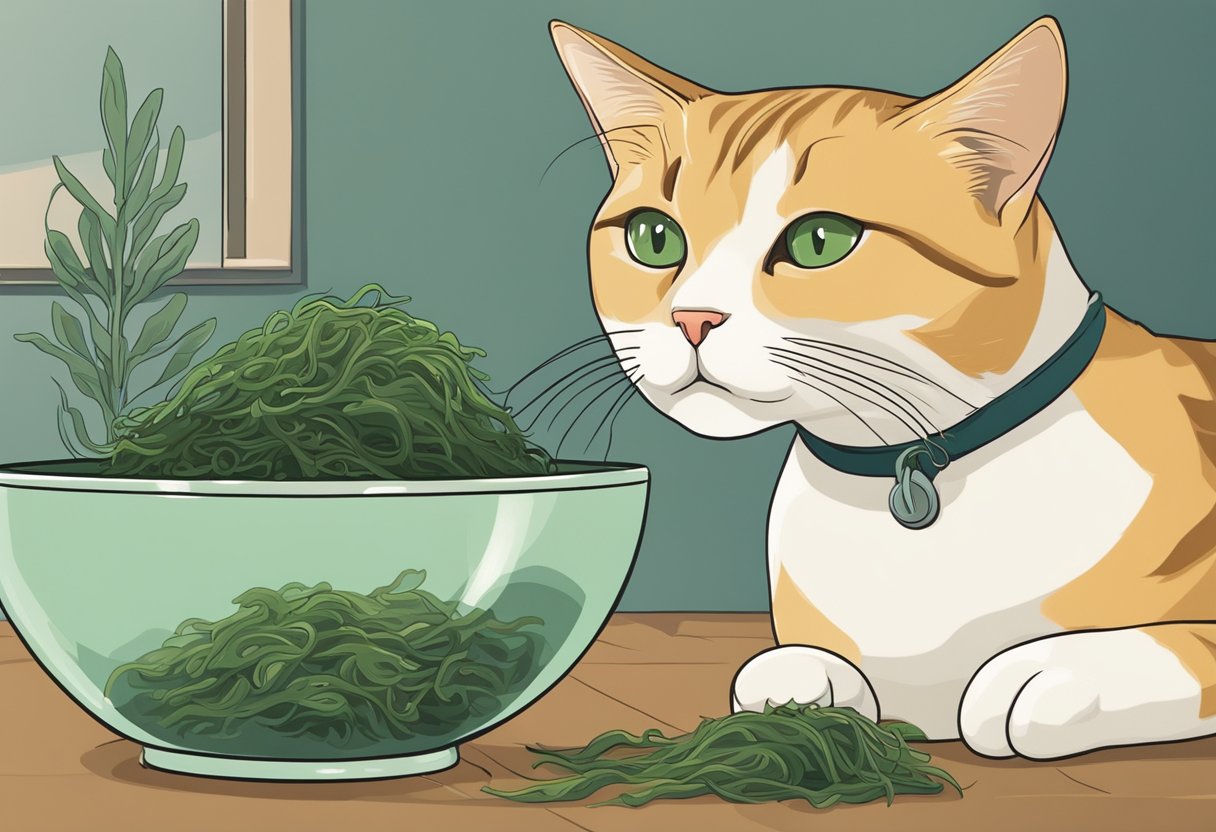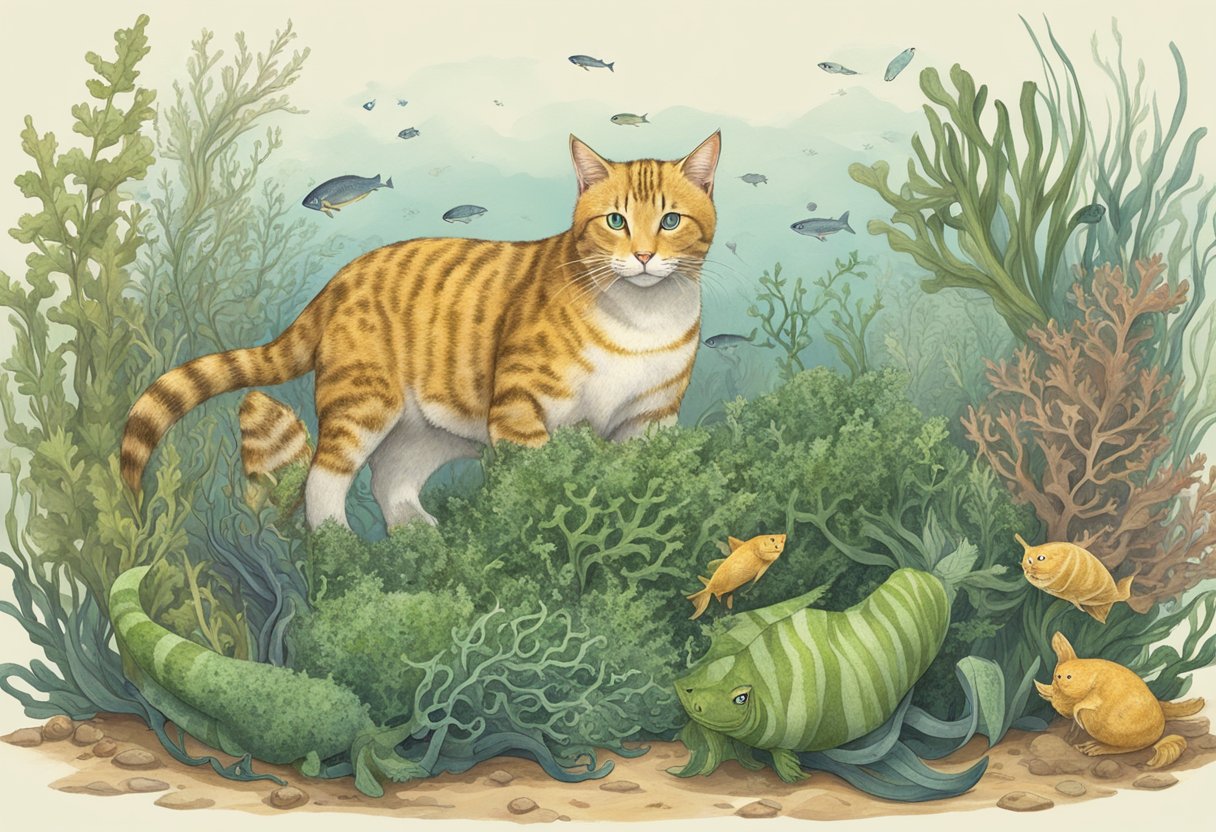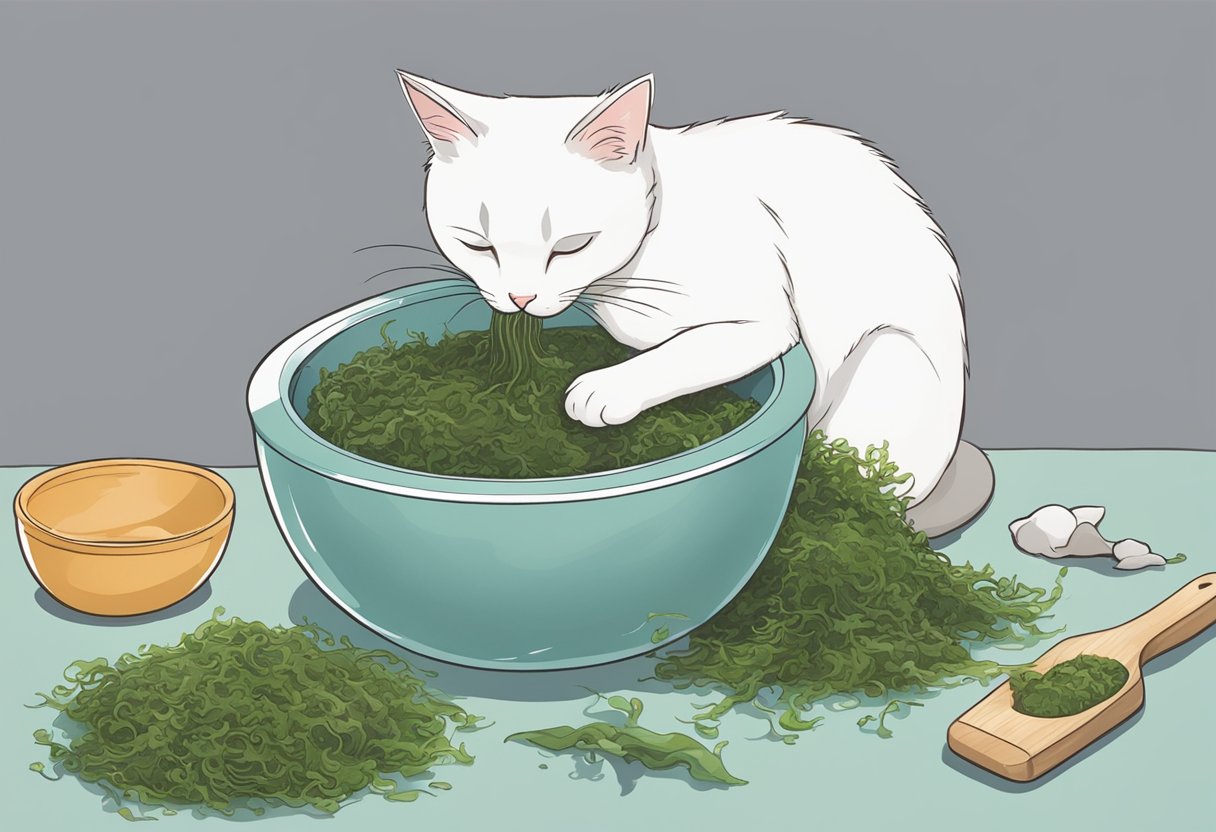Cats are known for their curious nature, and as pet owners, it's important to be well-informed about what our feline friends can and cannot eat. One surprising food that may pique their interest is seaweed. Can cats eat seaweed without any adverse effects, or is it best to keep our whiskered friends away from this aquatic plant?
Seaweed, a type of algae that can typically be found in the ocean, is a popular human food due to its numerous health benefits. It is packed with essential nutrients, such as vitamins, minerals, and antioxidants. While cats have different dietary needs than humans, the question arises whether the benefits also apply to our feline companions. Are there potential risks associated with feeding seaweed to cats, and if so, what kind of seaweed is safe for them?
Before introducing seaweed to your cat's diet, it is crucial to understand the benefits and risks associated with its consumption, the types of seaweed to consider, and the steps to take when preparing seaweed for your cat. Doing so will ensure that you make the best decision for your feline friend's well-being.
Key Takeaways
- Seaweed may offer benefits to cats, but it also comes with some risks.
- Different types of seaweed have varying effects on feline health.
- Proper preparation and understanding of cat dietary needs are essential when adding seaweed to their diet.
Benefits and Risks of Seaweed for Cats

Nutritional Value
Seaweed is rich in essential nutrients that can benefit your cat's health. Dried seaweed in particular is a good source of vitamins and minerals such as vitamin A, B1, B2, B6, iron, calcium, and iodine. These nutrients play a role in maintaining a healthy skin and coat, proper muscle function, and a well-functioning immune system. Moreover, a small amount can be added to your cat's diet to supplement their nutritional needs.
However, it's essential to remember that cats are obligate carnivores, meaning their primary source of nutrition should come from animal-based protein. Seaweed should only be a small addition to their diet, and not a substitute for meat.
Potential Health Concerns
While there are nutritional benefits to offering your cat dried seaweed, there are also potential risks associated with its consumption:
- Excessive iodine intake: Seaweed is naturally high in iodine, which is essential for thyroid function. However, too much iodine can lead to hyperthyroidism in cats. Be cautious about how much seaweed you offer, and consult with a veterinarian if you're unsure.
- Additives and preservatives: Some commercial seaweed products may contain additives or preservatives that might be harmful to cats. Choose products that are specific for pets or labeled as "natural" and "additive-free" to reduce potential risks.
- Choking hazard: If your cat attempts to eat a large piece of dried seaweed, it could potentially become a choking hazard. Always break the seaweed into small, manageable pieces before offering it to your cat.
- Allergies: Just like humans, cats can have allergies too. If your cat has never encountered seaweed before, there is a chance they could be allergic, so it's essential to monitor their reaction after introducing it to their diet.
In conclusion, while small amounts of dried seaweed can offer nutritional benefits to your cat, it's crucial to be aware of the potential health concerns. Ensure that you consult with a veterinarian before adding seaweed to your cat's diet and always monitor your cat for any adverse reactions.
Types of Seaweed and Their Effects on Felines

Common Seaweed Varieties
There are numerous seaweed varieties that can be found in various parts of the world. Some common types of seaweed include:
- Nori: This is a popular type of red seaweed that is commonly used in sushi rolls and as a garnish.
- Kombu: Also known as kelp, kombu is a brown seaweed that is often used in soups and as a flavor enhancer.
- Wakame: A type of brown seaweed that is typically used in salads and soups due to its unique texture.
- Dulse: This red seaweed is known for its slightly spicy flavor and is often eaten as a snack or added to various dishes.
While there are no scientifically proven benefits of feeding seaweed to cats, some owners claim that it can improve their feline's coat condition and aid in digestion. However, it is essential always to consult a veterinarian before introducing any new foods to a cat's diet.
Dried Seaweed Safety
Can cats eat dried seaweed? The answer depends on the type of seaweed and the individual cat. It is important to note that most seaweed is high in sodium, and excessive sodium intake can be harmful to cats. Owners should always exercise caution when introducing any new foods, including dried seaweed, to their feline's diet.
To minimize potential risks, owners should:
- Choose plain dried seaweed: Flavored or salted seaweed products may contain additional spices or additives that can be harmful to cats.
- Monitor portions: Offer small amounts of dried seaweed as a treat rather than a staple in the cat's diet to prevent excessive sodium intake.
- Observe your cat: Keep an eye on your cat's behavior and physical condition after introducing dried seaweed. If any adverse reactions occur, such as vomiting, diarrhea, or lethargy, discontinue feeding seaweed and consult a veterinarian.
In conclusion, while cats may consume small amounts of certain types of dried seaweed, it is crucial to be mindful of the potential risks associated with its consumption. Always consult a veterinarian before adding any new foods to a cat's diet.
Preparing Seaweed for Your Cat

Incorporation in Diet
When considering adding seaweed to your cat's diet, it's important to ensure the seaweed is safe for consumption. Dried seaweed, such as nori, is a suitable choice for felines. To incorporate seaweed into your cat's meals, consider the following options:
- Crumble dried seaweed into their regular food as a topping. This can provide an added nutritional boost and a unique flavor.
- Seaweed-based cat treats are available commercially for a convenient way to give your cat the benefits of seaweed in a form tailored to their needs.
- Adding seaweed flakes to homemade cat treats can also be a great way to include this nutritious ingredient in your cat's diet.
Serving Size and Frequency
When it comes to serving size and frequency for cats consuming seaweed, moderation is key. The following table outlines some general guidelines for incorporating seaweed into your cat's diet:
| Cat's Weight | Dry Seaweed Amount | Frequency |
|---|---|---|
| 5 – 10 lbs | 1 – 2 small flakes | 2 – 3 times per week |
| 10 – 15 lbs | 2 – 3 small flakes | 2 – 3 times per week |
| 15 – 20 lbs | 3 – 4 small flakes | 2 – 3 times per week |
Remember, each cat is different, and these guidelines may not apply to every feline. Pay attention to your cat's reaction to the seaweed and adjust the portion size and frequency accordingly. If you notice any adverse reactions or changes in your cat's behavior, it is best to consult with your veterinarian before continuing seaweed supplementation.
Understanding Cat Dietary Needs
Cats are obligate carnivores, meaning that they require a diet primarily composed of animal-based protein and fat to thrive. They have specific dietary needs to maintain their health and well-being. In this section, we'll explore the potential of seaweed as a snack for cats and its comparison to their natural diet.
Seaweed as a Snack
Seaweed is a type of marine algae that is commonly consumed by humans for its numerous health benefits. But can cats eat dried seaweed? Although it is not part of a cat's natural diet, small amounts of dried seaweed may still be consumed by cats, as long as it does not replace their need for animal-based protein sources.
Seaweed is rich in essential nutrients such as iodine, vitamins, and minerals. However, cats can only effectively utilize specific nutrients found in animal-based sources. Therefore, it's important for their primary food source to remain protein-rich, with seaweed as a supplementary snack in moderation.
Comparison to Natural Diet
To better understand the role seaweed may play in a cat's diet, it's important to compare it to their natural diet. Cats in the wild primarily consume small mammals like mice and birds, and they acquire essential nutrients from these animal sources.
Here's a comparison between the nutritional profile of seaweed and a cat's natural diet:
| Nutrient | Seaweed | Natural Cat Diet |
|---|---|---|
| Protein | Low | High |
| Fat | Low | High |
| Carbohydrates | High | Low |
| Fiber | High | Low |
| Vitamins and minerals | Diverse | Limited |
As seen in the table above, seaweed differs significantly from a cat's natural diet. While it possesses some vitamins and minerals that may be beneficial to cats, it is not a suitable replacement for their need for animal-based protein and fat.
In conclusion, when considering the question "can cats eat seaweed," it's essential to understand the nuances of feeding cats this unique type of human food. While certain types of plain seaweed can be a harmless and even beneficial addition to a cat's diet, not all seaweeds are safe. Edible seaweeds, when chosen carefully and offered in moderation, can offer some nutritional benefits.
However, it's crucial to remember that a cat's digestive system differs significantly from ours, so what's healthy for humans might not always be ideal for felines. When integrating seaweed or any human foods into your cat's diet, particularly if they're on a raw diet, it's advisable to consult with a veterinarian. This ensures that any addition, like cat seaweed, is suitable and won't disrupt their nutritional balance.





